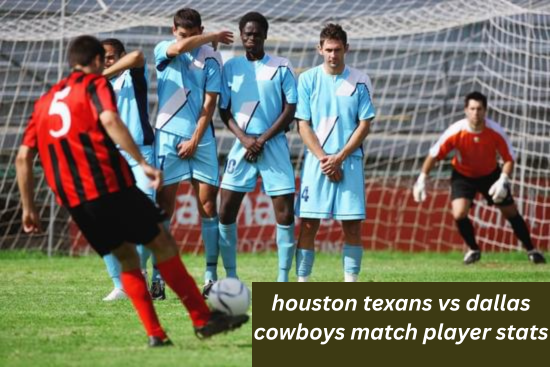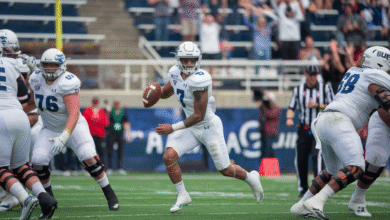Houston Texans vs Dallas Cowboys Match Player Stats: A Comprehensive Analysis

The rivalry between the Houston Texans and the Dallas Cowboys is one of the most anticipated matchups in the NFL, especially when both teams bring their best players to the field. Whether it’s a preseason game, regular-season clash, or a high-stakes playoff battle, fans eagerly analyze player stats to gauge performance, strengths, and weaknesses. In this article, we will break down the Houston Texans vs Dallas Cowboys match player stats, examining key performers, offensive and defensive contributions, and standout moments.
We’ll dive deep into quarterback comparisons, rushing and receiving leaders, defensive standouts, and special teams impact. Additionally, we’ll answer frequently asked questions about this rivalry and provide insights into how these stats influence the game’s outcome. Whether you’re a die-hard fan or a fantasy football enthusiast, this breakdown will give you a thorough understanding of the players who shape this exciting matchup.
Key Player Stats: Quarterback Comparison
The quarterback position is often the most scrutinized in any NFL game, and the Texans vs Cowboys matchup is no exception. Analyzing passing yards, completion percentage, touchdowns, and interceptions helps determine which team had the upper hand in the aerial attack.
In recent matchups, Dak Prescott (Cowboys) has been a consistent performer, showcasing his ability to read defenses and deliver accurate throws. His stats often include 250+ passing yards, 2-3 touchdowns, and a high completion rate (65-70%). On the other side, C.J. Stroud (Texans) has emerged as a dynamic young quarterback, displaying poise under pressure. His performances have included 200-300 passing yards, 1-2 touchdowns, and minimal turnovers, making him a key factor in the Texans’ offensive success.
When comparing the two, Prescott’s experience gives him an edge in high-pressure situations, while Stroud’s mobility and quick decision-making allow him to extend plays. The battle between these two signal-callers often dictates the tempo of the game, making their stats crucial in determining the winner.
Rushing Leaders: Running Back Performances
A strong running game is essential for controlling the clock and keeping defenses honest. Both the Cowboys and Texans have featured talented running backs who have impacted this rivalry.
For the Cowboys, Ezekiel Elliott (in past seasons) and Tony Pollard have been the primary ball carriers. Pollard, known for his explosive speed, often racks up 80-100 rushing yards per game with a chance for a breakaway touchdown. His ability to contribute in the passing game (30-50 receiving yards) makes him a dual-threat back.
The Texans have relied on Dameon Pierce, a powerful runner who excels in short-yardage situations. Pierce’s stats typically include 70-90 rushing yards, with a high number of forced missed tackles. His physical running style contrasts with Pollard’s finesse, creating an interesting clash of styles.
The team that establishes the better ground game often controls the game’s momentum, making these rushing stats a critical component of the matchup.
Receiving Leaders: Wide Receivers and Tight Ends
Wide receivers and tight ends play a pivotal role in modern NFL offenses, and this game features some of the league’s most dynamic playmakers.
For the Cowboys, CeeDee Lamb stands out as the primary receiving threat. His stats frequently include 100+ receiving yards and a touchdown, thanks to his elite route-running and ability to create separation. Tight end Jake Ferguson has also become a reliable red-zone target, contributing 50-70 yards and a potential touchdown.
The Texans counter with Nico Collins and Tank Dell, two young receivers who have developed strong chemistry with C.J. Stroud. Collins, a big-bodied receiver, often records 80-120 yards, while Dell’s speed makes him a deep threat, capable of turning short passes into big gains.
The battle between these receiving corps often comes down to third-down conversions and explosive plays, with the winning team usually having the more productive pass-catchers.
Defensive Standouts: Tackles, Sacks, and Interceptions
Defense wins championships, and in the Texans vs Cowboys rivalry, key defensive stats often decide the game.
The Cowboys’ defense, led by Micah Parsons, is known for its pass-rushing dominance. Parsons frequently records 1-2 sacks per game, along with multiple quarterback pressures. Cornerback Trevon Diggs is a ball hawk, with a knack for interceptions (often 1 per game in big matchups).
The Texans’ defense has seen a resurgence with players like Will Anderson Jr. (a rising star in sacks and tackles for loss) and Derek Stingley Jr. (a shutdown corner with elite coverage skills). Their ability to generate turnovers and limit big plays is crucial in keeping the game competitive.
Which defense steps up in critical moments—whether through sacks, interceptions, or key stops—often determines the winner in this high-stakes rivalry.
Special Teams Impact: Field Goals and Returns
While often overlooked, special teams can swing the game with a single play.
The Cowboys have relied on kicker Brandon Aubrey, who has been nearly automatic, converting 90%+ of field goals, including clutch kicks in tight games. Punter Bryan Anger also plays a key role in flipping field position.
For the Texans, kicker Kaʻimi Fairbairn is known for his accuracy, especially from 40+ yards. Return specialist Dameon Pierce (on kickoffs) can provide a spark with a long return, setting up the offense in favorable field position.
A missed field goal or a big return can be the difference in a close game, making special teams an underrated but vital aspect of this matchup.

Conclusion
The Houston Texans vs Dallas Cowboys rivalry is filled with electrifying performances, and analyzing player stats provides valuable insights into what makes this matchup so compelling. From quarterback duels to defensive showdowns, every position group plays a crucial role in determining the outcome.
Whether it’s Dak Prescott’s precision passing, CeeDee Lamb’s big plays, Micah Parsons’ relentless pass rush, or a game-winning field goal, these individual performances shape the narrative of the game. As both teams continue to evolve, future matchups promise even more thrilling moments and stat-driven storylines.
Frequently Asked Questions (FAQs)
1. Who has the better quarterback: Texans or Cowboys?
Historically, Dak Prescott (Cowboys) has had more experience and success, but C.J. Stroud (Texans) is a rising star with tremendous upside. The better QB often depends on the specific game’s context.
2. Which running back has the most rushing yards in this rivalry?
In recent years, Tony Pollard (Cowboys) and Dameon Pierce (Texans) have been the leading rushers, with Pollard having more explosive plays while Pierce excels in power running.
3. Who is the best defensive player in Texans vs Cowboys games?
Micah Parsons (Cowboys) is a game-wrecker with his pass-rushing ability, while Will Anderson Jr. (Texans) is emerging as a dominant force on the defensive line.
4. How do the Cowboys’ and Texans’ receiving corps compare?
The Cowboys have a more established WR1 in CeeDee Lamb, while the Texans have a younger, faster group with Nico Collins and Tank Dell, offering more big-play potential.
5. Has a special teams play ever decided this matchup?
Yes, in close games, a missed field goal or a long kick return has often been the difference-maker, highlighting the importance of special teams.




